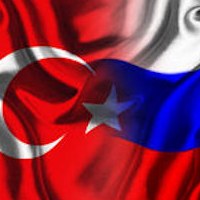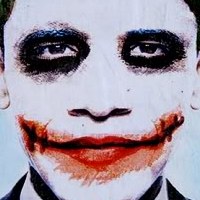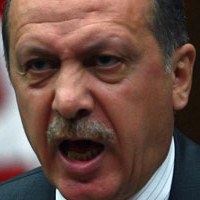![]()
Wed, Aug 10, 2011 | Asia Times online | By Spengler

Traders work on the trading floor of the Istanbul stock exchange in Istanbul, Turkey. (Photo: Kerem Uzel/Bloomberg)
Instant obsolescence of the Turkish model
With the Turkish lira in free-fall, Recep Tayyip Erdogan looks less like a prospective Ottoman caliph than a garden-variety Third World strongman whose patronage machine ruined the national currency. The Turkish prime minister’s “neo-Ottoman dream” (Amir Taheri) for a “new Ottoman region” (Harold Rhode) reached its best-used-by date last December, when Turkey’s stock market quadrupled in value from its 2009 crisis low. The deflationary wind that rocked American markets last week may flatten Turkey’s.
Since then, the Turkish market has lost two-fifths of its value in dollar terms, and the Turkish lira has fallen farthest of the world’s major currencies, close to its 2009 crisis low. Turkey’s financial unraveling has only begun. On March 1, I warned that Turkey was “a developing market to avoid”. With the carnage in global markets, Turkey’s problems barely made the back pages. But the strategic importance of Turkey’s currency route will become a major theme for foreign policy during the next several weeks.
By contrast, other emerging market currencies have soared: Brazil’s currency trades 70% above its 2009 low, and Russia’s by 25%. Unlike the emerging countries with whom it competes, Turkey’s current account deficit is out of control. It exceeds 10% of gross domestic product (GDP), about the same as crisis-ridden Greece and Portugal. Turkey’s central bank has let the currency slide in a belated effort to correct the imbalance, but the lira’s depreciation has backfired.
Turkey’s supposed return to world power has captivated the foreign policy punditeska for years. In April 2009, President Barack Obama made Turkey his first overseas trip and hailed his “model partnership” with the country’s Islamist leader as a pillar of America’s relationship with the Muslim world.
During the first weeks of the so-called Arab Spring, countless commentators hailed the “Turkish model” as a template for democratic reform in the Arab world. Political models are like automobile models, I offered at the time: you can’t have them unless you can afford them. Turkey was not a paragon but a rickety platform, I argued (The Heart of Turkness, Asia Times Online, March 23, 2011). It turns out that even Erdogan can’t afford the Turkish model. He has been living on borrowed time, literally.
Bank credit is rising at a 30% rate for households and a 40% rate for business, after adjustment for inflation. The country’s GDP growth at an 11% annual rate in the first quarter — the world’s highest — because the credit bubble boosted domestic demand.
“Turkey’s current account deficit is a frightening 8 per cent of GDP and is expected to hit 10 per cent before the end of the year,” the Financial Times wrote August 4. “And the deficit is badly funded, with only about 15 per cent covered by foreign direct investment and the rest by portfolio flows.”
Short-term debt held by banks and hedge funds, that is, finance most of Turkey’s enormous deficit. The market is worried about Italy, whose debt has an average maturity of seven years. Turkey’s foreign debt has short maturities and has doubled in the last year and a half.



 RSS
RSS










Latest Comments
Hello Mike, Thank you for your positive feedback to the article. I felt there wasn’t too much critical analysis of ...
Thanks for this considered and well constructed article. A follow up article on the manner in which the editorial contro...
THE CLUELESSNESS OF CLAIMING THAT OBAMA'S MIDDLE EAST POLICIES WERE A FAILURE CANNOT BE FURTHER FROM THE TRUTH, WHAT THE...
As long as Obama is the president of the usa do not trust the us government......
Thank you for an good read....